Story by Peter von Buol
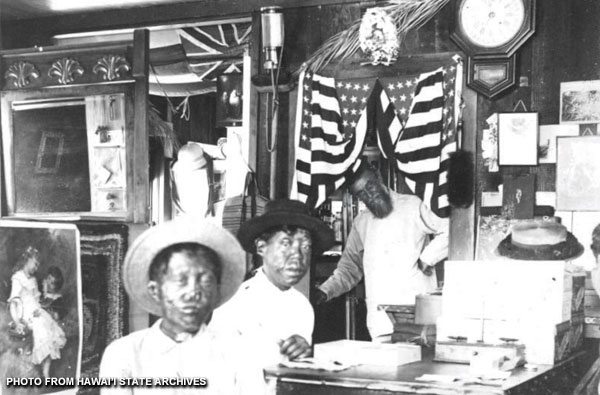
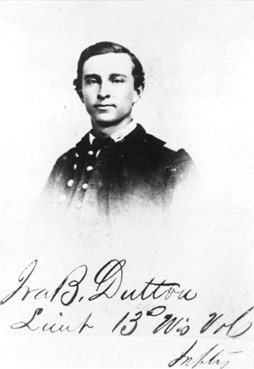
Outside St. Joseph’s Church in Kamalo, on the island of Moloka‘i, stands the seven-foot-tall marble statue of a Union officer named Joseph Dutton. The church may seem an unlikely place to honor a soldier from the American Civil War, but Dutton spent the last forty-five years of his life working beside and on behalf of the man who built St. Joseph’s — Father Damien De Veuster.
By his own accounts, Dutton was proud of his military service, but after the war, he wandered aimlessly for a decade. Father Bill Petrie, whose parish includes St. Joseph’s, has talked with Maria Devera, a physician at Schofield Barracks Health Clinic on O‘ahu. Dr. Devera has researched Dutton’s life extensively. “While she can’t say with certainty that Dutton had post-traumatic stress disorder . . . [his] experiences in the war could have been a reason for his failures in life, which included his addiction to alcohol and his failed marriage.”
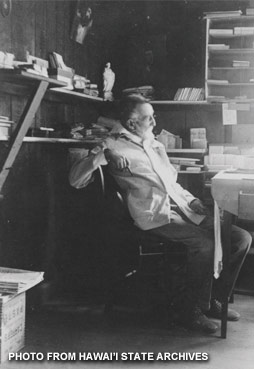
Dutton found salvation in Father Damien. In 1886, at the age of forty-three, the former soldier came to Kalaupapa to help care for the hundreds of Hansen’s Disease patients who had been exiled to the remote settlement. Years later, he recalled meeting the future Roman Catholic saint and saying, “My name is Joseph Dutton; I’ve come to help, and I’ve come to stay.” And stay he did, continuing the work long after Damien’s death in 1889.
“Damien embraced Dutton immediately, and saw him as a blessing,” says Father Petrie. “He did the bandaging, the treating and washing of patients every day. . . . Dutton forged real camaraderie [for] residents who were not able to return home.”
Gavan Daws, historian and author of Holy Man: Father Damien of Molokai, agrees that Damien was grateful for Dutton’s arrival, and valued his compassion, calm temperament, and organizational skills. “Measured against the general run of humanity, who would have done what [Dutton] did?” asks Daws.
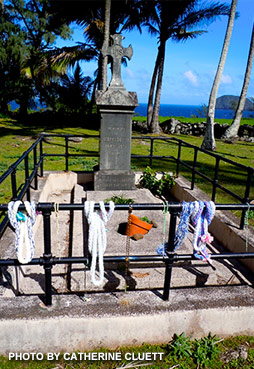
The former soldier wrote thousands of letters to inform the world about life on Kalaupapa. Among his many “pen pals” was President Theodore Roosevelt. So moved was Roosevelt by Dutton’s story of dedication and patriotism, that in 1909, on the President’s order, the U.S. Navy’s “Great White Fleet” sailed past Kalaupapa, dipping their flags in Dutton’s honor.
Nichol Kahale says Dutton’s military service piqued the interest of her father, the late Larry Helm. “My father, former commander and founder of Moloka‘i Veterans Caring for Veterans, felt Brother Dutton’s life was relatable, particularly to veterans who suffered from PTSD. Learning about Dutton’s hardships and how he turned them into service for others . . . motivated my father to get a statue made in his honor.”
Dutton’s supporters hope the statue will eventually be relocated to Kalaupapa, a move that must first be approved by the Federal Government, because of Kalaupapa’s status as a national historical park.
“We hope to bring it down. Hopefully, it will be soon,” says Petrie.




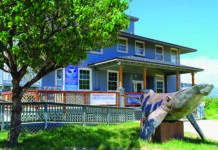

Being a Civil War buff I was very touched and Curious when I saw the statue of Capt. Dutton. I am preparing a talk on him and have been doing research on him from all available websites and literature I can find I have written to the Molokai veterans association asking for more information but as yet have not heard back from them I would like to know if and when the statue was dedicated and if it was done with a ceremony and is it documented with pictures that would enhance my presentation also I will add like to know more about the tribute Paid by the trap family my presentation is on the second Wednesday of November at the Lincoln shrine located in Redlands California where I am a member of the inland Civil War Roundtable. I think the story of brother must be propagated.